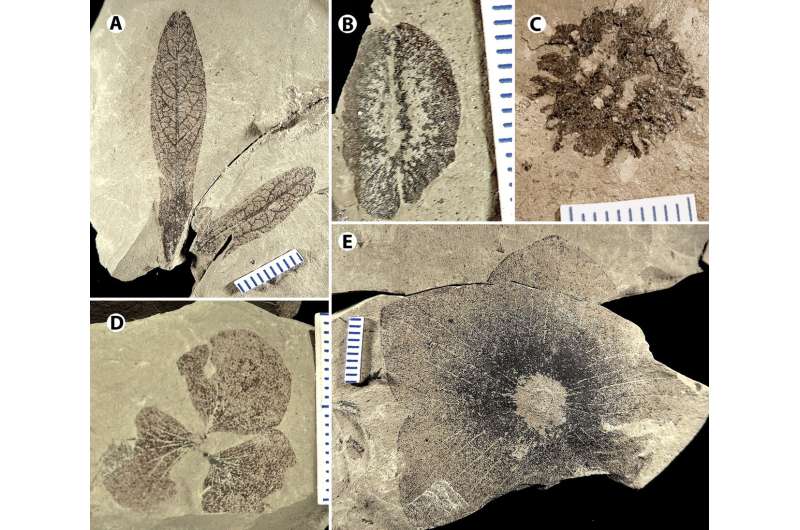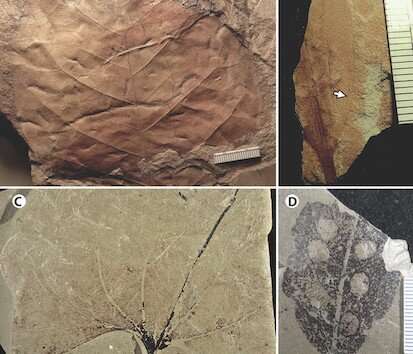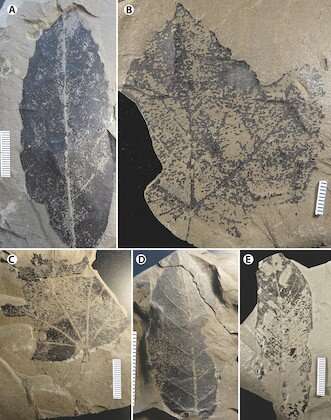This article has been reviewed according to Science X's editorial process and policies. Editors have highlighted the following attributes while ensuring the content's credibility:
fact-checked
trusted source
proofread
Professor unearths the ancient fossil plant history of Burnaby Mountain

New research led by Simon Fraser University paleobotanist Rolf Mathewes provides clues about what plants existed in the Burnaby Mountain area (British Columbia, Canada) 40 million years ago during the late Eocene, when the climate was much warmer than it is today. The results of their plant fossil analysis were recently published in the International Journal of Plant Sciences.
As an undergraduate, Mathewes and his supervisor at the time, professor Robert C. Brooke, found and collected plant fossils from a deposit exposed during the construction of the university in the late 1960s. The fossils were kept at SFU but remained locked away in cabinets for many years until Mathewes returned to the collection as a professor. He dedicates the paper to the memory of Brooke, his late supervisor and mentor.
One of the fossils identified by their colleague David Greenwood, from Brandon University, is of a palm leaf fragment. The team also identified a hydrangea flower and the flower of an extinct plant from the same family as the basswood, a tree native to Eastern North America. A microscopic analysis of fossil pollen extracted from the fine shale also reveals the presence of alders, ferns, elms, sweetgum, and many other plants.
"These plant fossils tell us the climate was warm temperate to subtropical because of the presence of palms," says Mathewes, study lead and SFU professor of paleoecology & palynology. "If you wanted an analogue for what the climate was like compared to today, the conditions would be similar to the East Coast of the United States somewhere around Wilmington, North Carolina, where palms are still native today."

Study co-author Tammo Reichgelt (University of Connecticut) used new climate modeling techniques to confirm the warmer conditions.
Although planted palms can be found growing in the Lower Mainland today, Mathewes notes that these plants would not survive in British Columbia on their own as they did in the distant past.
"Even if they flowered and produced seeds, their young seedlings would never be able to compete with the seedlings of Douglas fir and hemlocks and alders that are our native vegetation and probably would die in the first hard frost of winter," he says.
He explains that most of Burnaby Mountain is comprised of sandstone and gravel but the fossils are only preserved on shale or mudstone. In the late Eocene, Burnaby Mountain had not yet formed and was a flood plain, like the Fraser River Delta, with ponds and river channels with vegetation growing near sea level.

The plants and trees growing on the flood plain deposited their leaves, flowers and pollen into the fine sediment of a shallow lake or pond. Their fossils formed through a process of being compressed under layers of sediment for millions of years.
One of the fossil leaves clearly displays round feeding marks made by an insect, and Mathewes says there is still much to be discovered, identified and studied from the pollen samples and a second fossil deposit site.
More information: Rolf W. Mathewes et al, Plant Megafossils, Palynomorphs, and Paleoenvironment from the Late Middle to Late Eocene Burnaby Mountain Flora, Huntingdon Formation, British Columbia, Canada, International Journal of Plant Sciences (2023). DOI: 10.1086/724156
Provided by Simon Fraser University



















